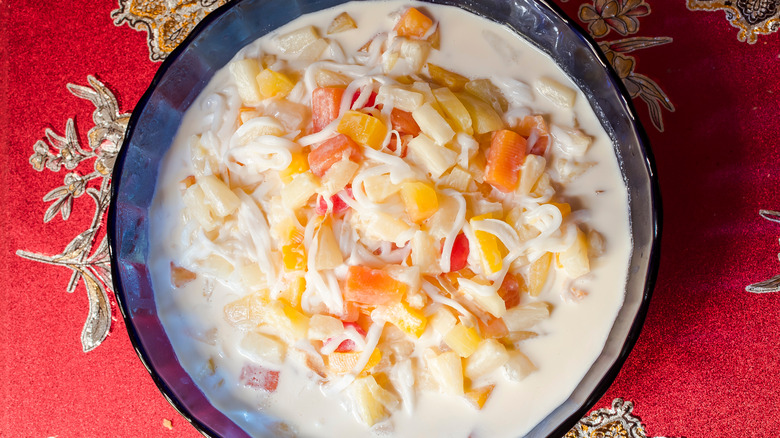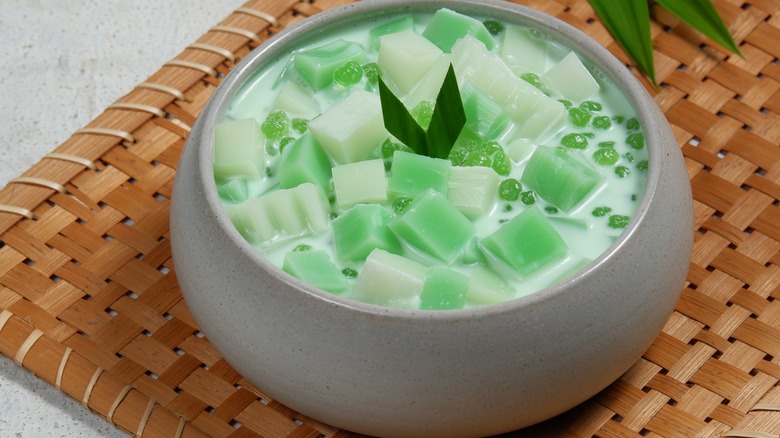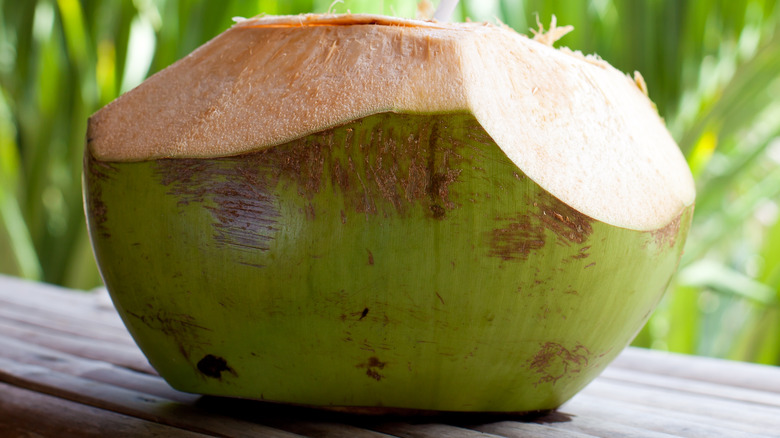Filipino Fruit Salad Is A Vibrant Dish Loaded With Sweet And Sour Flavors
Fruit salads are often overlooked. However, with a thoughtful assembly of components, they check all the boxes for a tasty dessert. With a medley of textures and flavors — easily batched into large volumes and prepped ahead of time — they're especially convenient for group dining.
In the Philippines, specifically, Christmas gatherings are interlinked with a bowl of fruit salad, also called buko salad after the young green coconut (buko) which is traditionally an ingredient. The dish comes together with canned fruit and that young coconut, all dressed in a creamy, sweet dressing. Easy to prepare, it only requires a few hours of planning to cool the components.
Buko salad delivers bright flavors in a comforting package. It tastes delectably sweet, tangy, and with tropical notes, encompassed in a variety of textures. Plus, it's pleasing to look at, with vibrant color, not to mention rife for experimentation, readily incorporating unique spins. So, how did this sweet creation made with canned fruit arise in the Philippines?
Background of Filipino fruit salad
This refreshing mix of preserved fruits appears reminiscent of ambrosia fruit salad, and there is indeed a culinary link. Filipino fruit salad took hold after the U.S. first controlled and later influenced the Phillippines. During this period — which started in the late 19th century — an influx of American imports entered the archipelago. Especially after World War II, preserved canned fruits became increasingly popular with the Filipino middle class. Since the cans were pricier than fresh local produce, fruit salad emerged as a dish for special occasions. It continues to be linked with holidays for this reason. For instance, it's a cornerstone of the Noche Buena Feast, a large spread of food enjoyed on Christmas Eve.
Filipino fruit salad is distinguished by the inclusion of shredded coconut, a popular crop in the archipelago. And some versions also add corn – which lends it a resemblance to other iced Southeast Asian desserts such as cendol. However, with a bite, buko salad is an unmistakable creation of its own. So, what's in it?
Ingredients in Filipino fruit salad
As per the name, a mixture of fruits forms the backbone of the dessert. Simply using a canned tropical fruit assortment is a popular choice, which is often expanded with canned peaches, pears, citrus, and occasionally lychees. Another quintessential addition is buko — which lends the dish its name. This shredded young coconut flesh adds a characteristic texture, and can also be bought canned in syrup if there isn't a coconut tree to hand. Other components include small jelly-like cubes made from coconut or pineapple, which also contribute to the typical consistency. Corn is sometimes added, too, for a further contrasting and tangy bite.
The canned ingredients are carefully drained to ensure the salad doesn't become soggy. Meanwhile, the dressing is prepared. It's usually a mixture of condensed milk and all-purpose cream, although some replace it with sour cream for a tangier touch. Everything is mixed together and allowed to refrigerate for several hours to meld the flavors. It's then served up in individual bowls.


